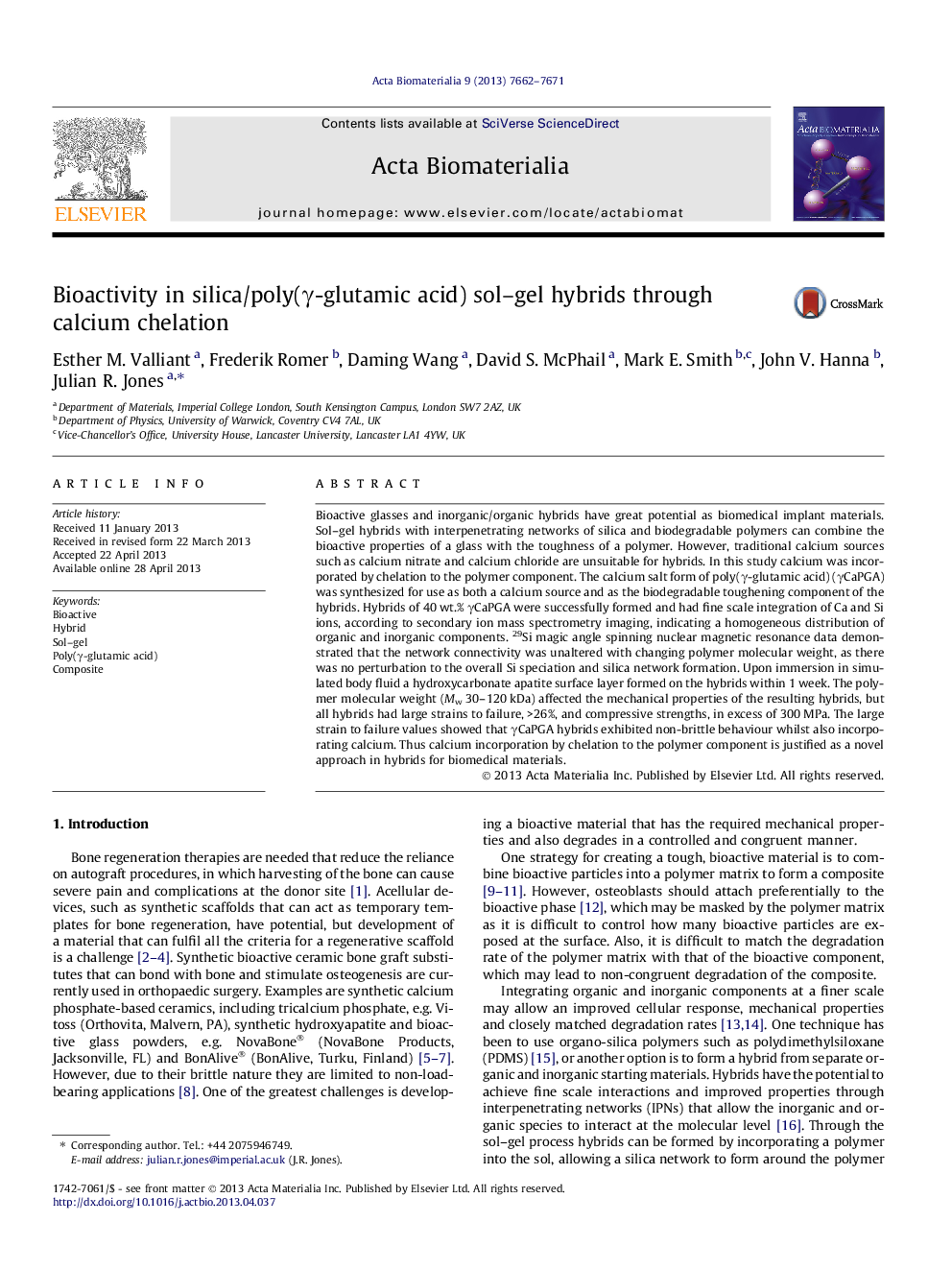| Article ID | Journal | Published Year | Pages | File Type |
|---|---|---|---|---|
| 10159589 | Acta Biomaterialia | 2013 | 10 Pages |
Abstract
Bioactive glasses and inorganic/organic hybrids have great potential as biomedical implant materials. Sol-gel hybrids with interpenetrating networks of silica and biodegradable polymers can combine the bioactive properties of a glass with the toughness of a polymer. However, traditional calcium sources such as calcium nitrate and calcium chloride are unsuitable for hybrids. In this study calcium was incorporated by chelation to the polymer component. The calcium salt form of poly(γ-glutamic acid) (γCaPGA) was synthesized for use as both a calcium source and as the biodegradable toughening component of the hybrids. Hybrids of 40 wt.% γCaPGA were successfully formed and had fine scale integration of Ca and Si ions, according to secondary ion mass spectrometry imaging, indicating a homogeneous distribution of organic and inorganic components. 29Si magic angle spinning nuclear magnetic resonance data demonstrated that the network connectivity was unaltered with changing polymer molecular weight, as there was no perturbation to the overall Si speciation and silica network formation. Upon immersion in simulated body fluid a hydroxycarbonate apatite surface layer formed on the hybrids within 1 week. The polymer molecular weight (Mw 30-120 kDa) affected the mechanical properties of the resulting hybrids, but all hybrids had large strains to failure, >26%, and compressive strengths, in excess of 300 MPa. The large strain to failure values showed that γCaPGA hybrids exhibited non-brittle behaviour whilst also incorporating calcium. Thus calcium incorporation by chelation to the polymer component is justified as a novel approach in hybrids for biomedical materials.
Related Topics
Physical Sciences and Engineering
Chemical Engineering
Bioengineering
Authors
Esther M. Valliant, Frederik Romer, Daming Wang, David S. McPhail, Mark E. Smith, John V. Hanna, Julian R. Jones,
